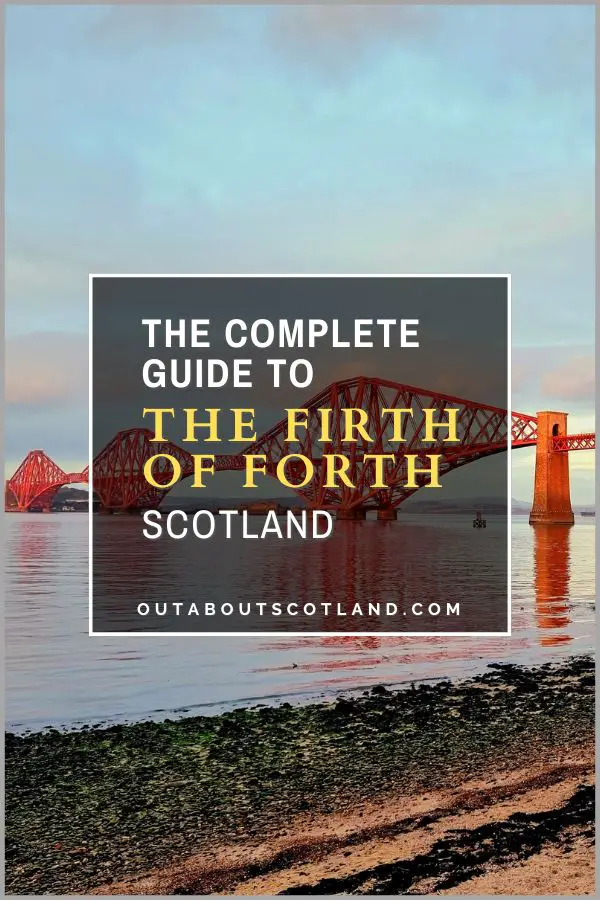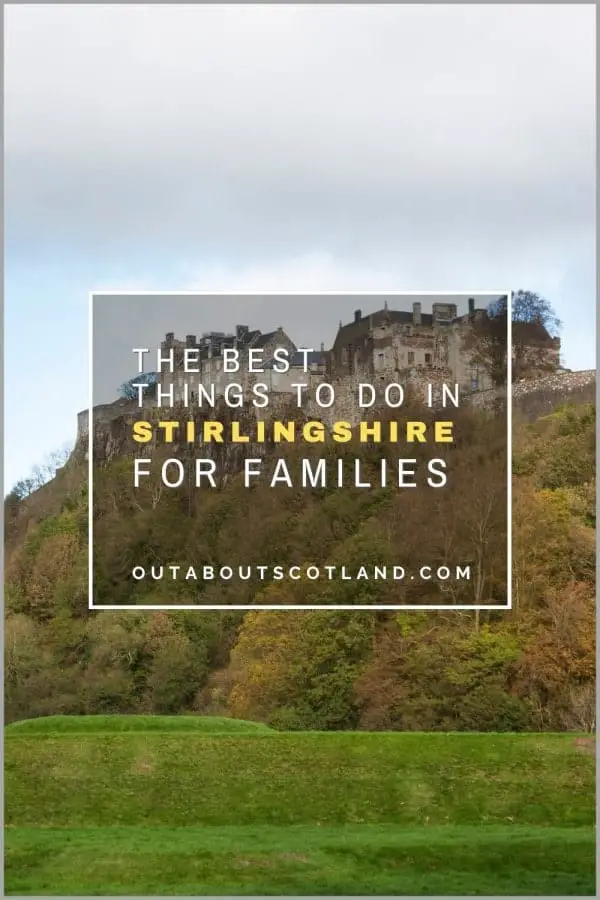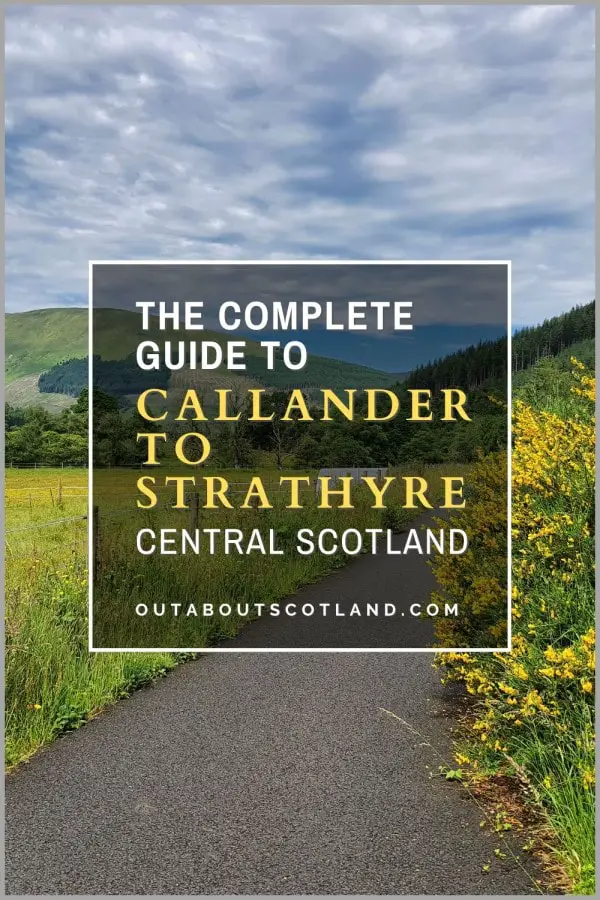The central belt of Scotland lies between the Scottish Borders and the Highlands, where it combines the best of both regions in a stunning collection of mountains, lochs, and forests. As the region with the highest population density in Scotland, it’s not surprising that it’s packed with tourist attractions, so visitors will find themselves spoilt for choice for things to do, whether it’s walking through the forests of Perthshire or exploring historic sites like Stirling Castle.
Discover the best things to do in Central Scotland for families with this article which features tourist information and good-to-know visiting tips.
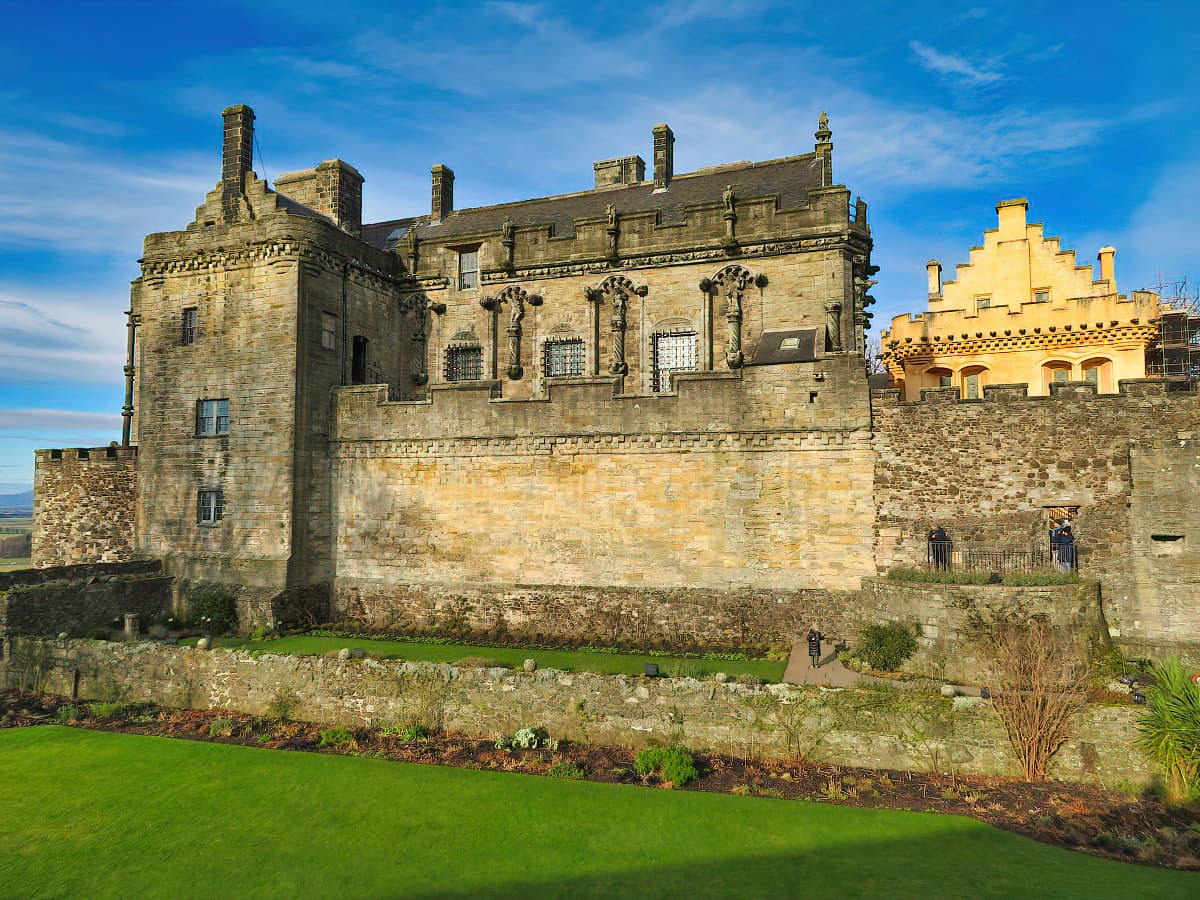
Things to Do in Central Scotland for Families
Central Scotland is one of the top tourist destinations in Britain, thanks to the cities of Edinburgh and Glasgow, which are home to a wide variety of fun attractions. But there’s much more to the region than its cities, and you don’t have to travel far to find yourself in the heart of one of the most scenic and underrated parts of the country.
It’s understandable that so many visitors choose to spend their Scottish holidays in Edinburgh and Glasgow, as those are the places most heavily advertised, but that also means the rest of Central Scotland is blissfully free of busloads of camera-wielding tourists.
If you really want to escape the hustle and bustle of modern life there’s perhaps no better place to visit than Central Scotland, whether it’s in Perthshire’s ‘big tree country’, the historic castles of Stirlingshire, or the pretty countryside of Fife.
The majority of Central Scotland lies just outside of the Highland Boundary Fault, so it’s relatively flat with great swathes of land that are perfect for farming, hence the reason why the region is often called ‘Scotland’s larder’. It’s also full of historic villages, and some, like Culross, have been frozen in time and are almost completely unchanged from their heydays in the 1700s.
Protect Your Family From Scotland's Biting Midges
- Powerful, reliable protection for up to 8 hours
- Water- and sweat resistant
- Repels midges, mosquitoes, horse flies, sand flies, fleas and ticks
- Safe for use on adults, children over 30 months and pregnant women
- Non-sticky, moisturising with a pleasant fragrance
- Packaging may vary
Aberdour Castle
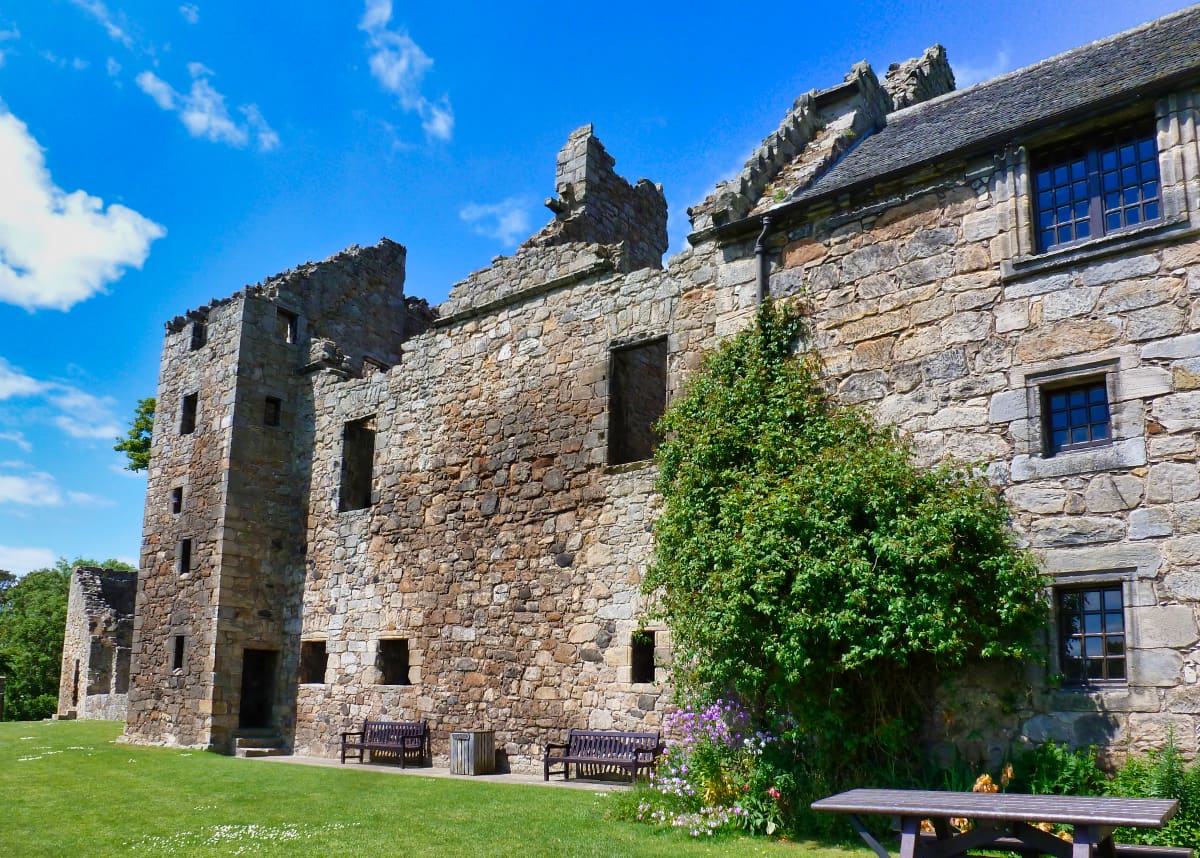
Out About Scotland Complete Guide to Aberdour Castle
If you’re looking for historic castles in Scotland, this beauty in the village of Aberdour in Fife should be right at the top of your list. While Edinburgh and Stirling castles get all the attention for their size, Aberdour remains relatively unknown, even though it’s one of the oldest standing castles in Scotland.
It’s split into two halves, with a ruined original section that’s almost a thousand years old and a much newer townhouse that’s a mere five hundred years old. The reason it has this Jekyll and Hyde appearance is that the oldest part of the castle was ravaged by fire in the 1600s, but it was never repaired after the Douglas family (the owners) fell into financial ruin in the 1700s.
Historic Environment Scotland has done a first-rate job of bringing the partially restored castle back to life as a faithful recreation of how it would have appeared when the Douglas family was at the height of their power. There are a few points of interest to look for when you visit, including the family church to the rear of the main gardens and an unusual tiered lawn that contains one of the largest dovecot’s (a type of pigeon coop) in Scotland.
After you’ve visited Aberdour Castle, you can take a drive to explore Dunfermline Abbeyor go for a walk on one of the many Fife coastal footpaths (Silver Sands Beach is a good starting point).
Blackness Castle
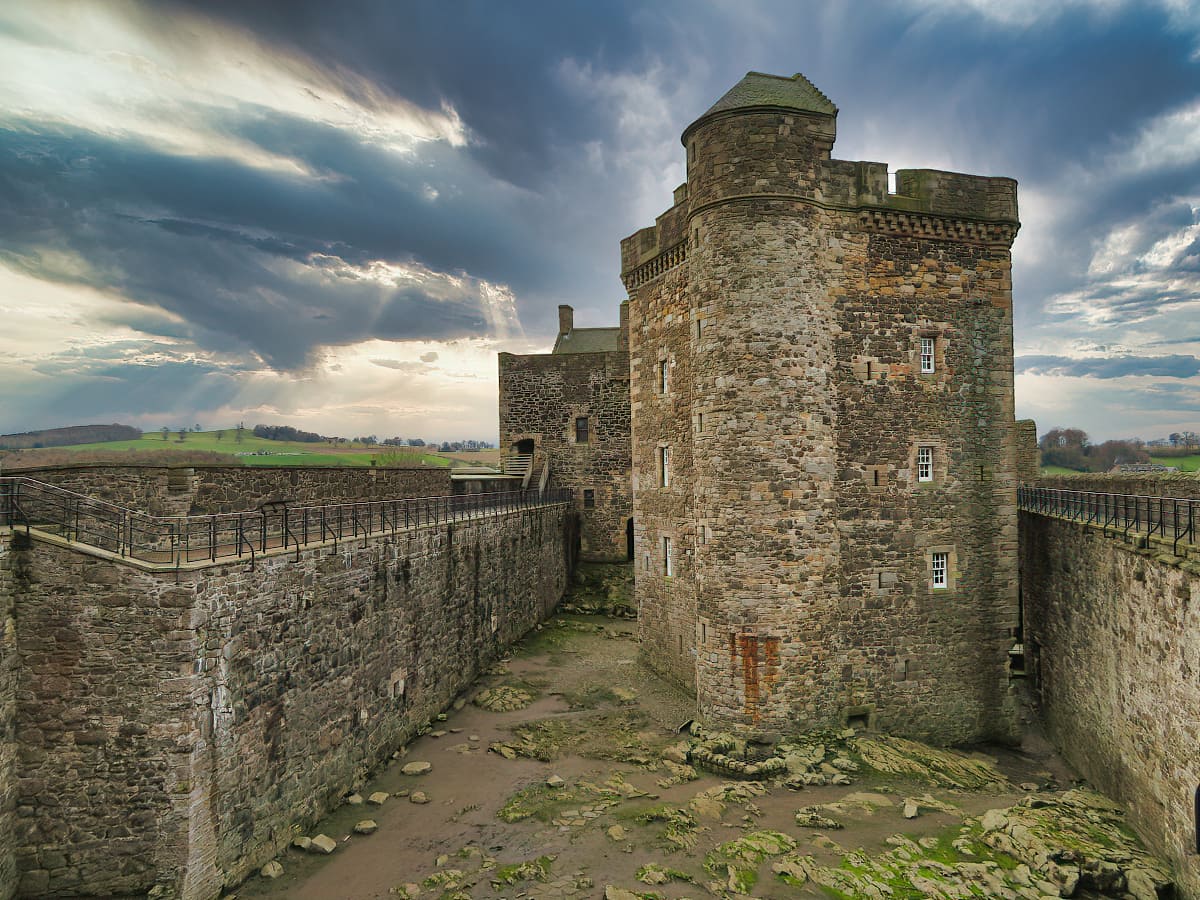
Out About Scotland Complete Guide to Blackness Castle
If you don’t already know, the Firth of Forth is a large sea inlet that stretches from Burgh at its mouth to Kincardine, 30 miles north-west, before narrowing into the River Forth. The area west of Edinburgh isn’t exactly a hotbed of tourist attractions, but there are a few places worth visiting, one of which is Blackness Castle.
Known locally as ‘the ship that never sailed’, Blackness Castle sits on a promontory that overlooks the Firth of Forth, and the reason it gained its nickname is because the front of it is pointed like the bow of a ship.
For a building that’s over 600 years old, this is one fortress that’s in remarkably good condition, and it’s one of the few castles of its age in Britain that saw active service during WWII when the British Army was stationed there. Today, visitors can explore the castle and its gargantuan outer walls as well as the interior of the tower house, although the old officer’s quarters and the soldier’s barracks are sadly closed to the public.
Of particular interest is the castle courtyard that was used in scenes of the TV series Outlander and the exceptionally long quay that was used for loading munitions in the 1800s. This is a genuinely interesting historic site, and coupled with the numerous walks you’ll find along the coastline and the birdwatching opportunities on the mudflats, it’s certainly worth visiting if you’re looking for something to do outside of Edinburgh.
Book Tours in Scotland
Blair Drummond Safari Park
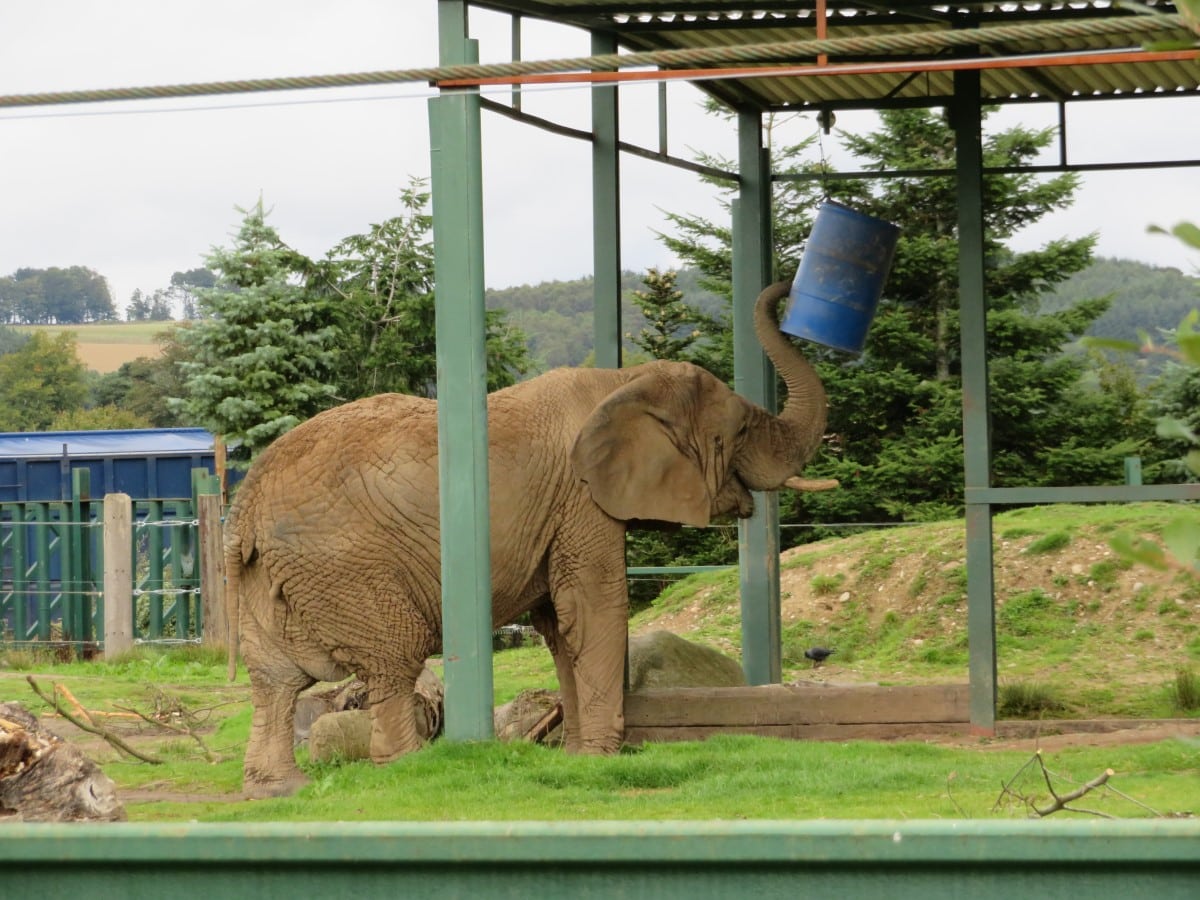
Out About Scotland Complete Guide to Blair Drummond Safari Park
This park covers more than 120 acres, and visitors can enjoy animal pens, play parks, and fun fair rides, as well as the drive-through safari that winds its way through the various animal reserves. While the other attractions are good, the highlight has to be the safari, where you enter an African reserve, a lion reserve, a monkey jungle, and an Asian reserve, each of which is big enough to give the animals lots of room to roam but not so big you can’t see them.
When you finish the safari and enter the main section of the park, you’ll find it’s a mix of a traditional zoo and a theme park, so if you’ve got bored kids, it’s possibly the best place in Scotland to keep them entertained.
Enclosures inside the park include Lemur Land, where you can walk amongst lemurs (obviously), a boat safari where you can sail your way around an island of chimpanzees, and a bird of prey centre that stages flying displays.
There are also elephant, rhino, and giraffe enclosures; a giant wooden fort; dodgems and mini-roller coaster rides; a carousel; and if you’re feeling hungry, you can either take your own food to the picnic and BBQ areas or grab a bite to eat in the restaurant.
The only downside to Blair Drummond Safari Park being so good is that it gets very busy at the weekend, so unless you have limitless levels of patience, you might consider reserving your visit for midweek instead.
Culross
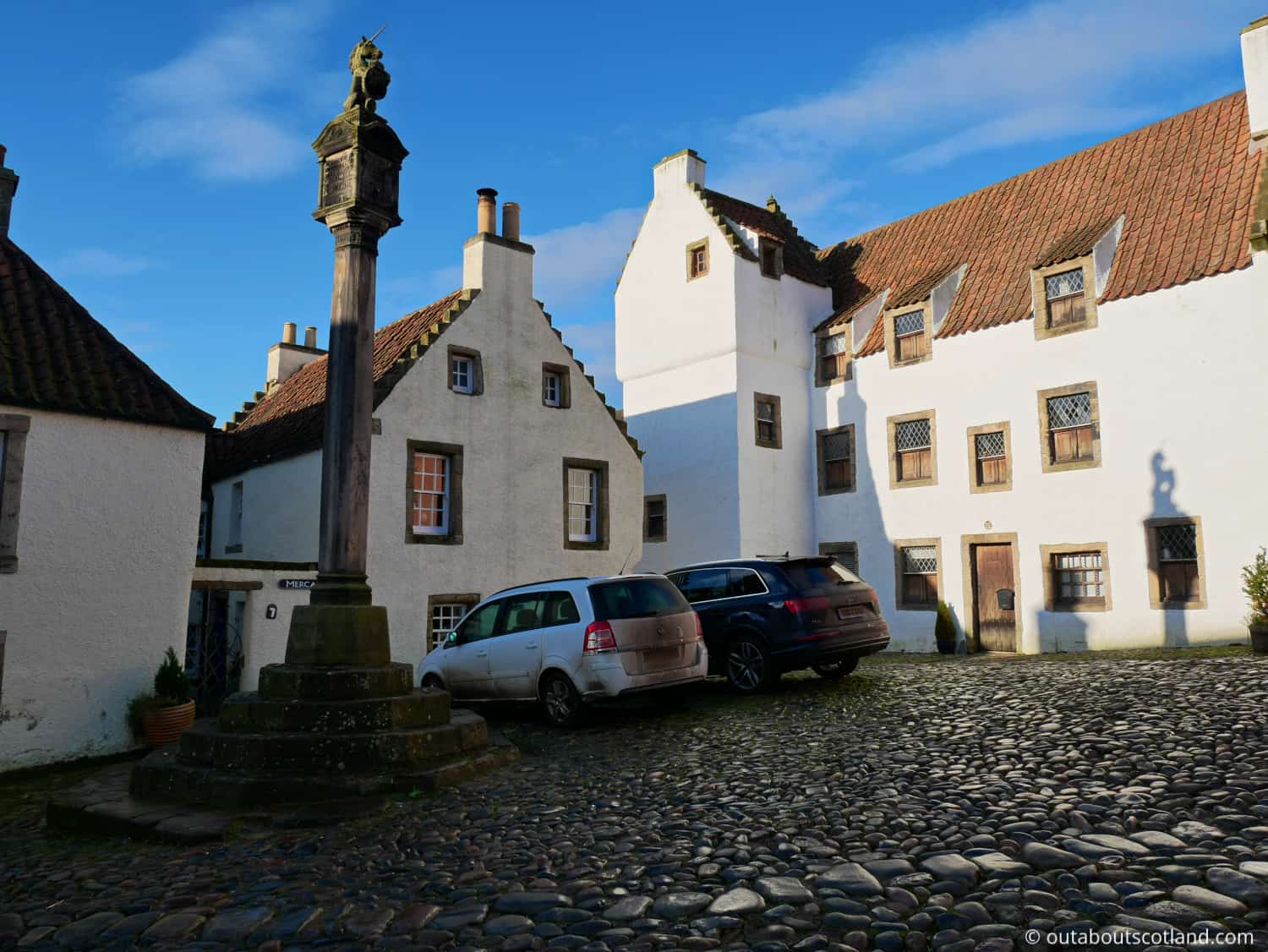
Out About Scotland Complete Guide to Culross
I have to say I love visiting Culross, as it has an atmosphere like no other place in Scotland. The village is situated on the northern bank of the Firth of Forth, ten miles west of Dunfermline, where it has remained almost entirely unaltered since the height of its wealth in the 1700s.
When you visit Culross, you’ll notice it has a long pier, which is your first clue as to why the village became so prosperous. Back in the day, vast quantities of coal and salt were mined locally, and Culross became one of the main transport hubs, which very quickly brought in lots of money for the entrepreneurs who seized on the trading opportunities.
The National Trust for Scotland now oversees Culross Palace, which is a good example of how the entrepreneurs built their homes close to their businesses and kept much of this wealth in the village.
The palace (it has nothing to do with royalty) was built by Sir George Bruce, who owned many of the mines in the area, and even though it’s over 300 years old, it has been almost entirely restored to how it would have looked in its prime.
Visiting Culross really is like stepping into a time machine with its immaculate 18th-century terraced houses, cobbled streets, grand central townhouse, and atmospheric village square. In fact, it’s so unchanged from the 1700s that it was used extensively as a filming location for Outlander.
The final attraction in this lovely age is the 13th-century abbey, which was built in dedication to St. Mungo, who went on to establish Glasgow. The ruins of the abbey and the church behind it are both open to the public with no entry fee, so if you have any interest in Scotland’s history, you should definitely take a look while exploring Culross.
Protect Your Family From Scotland's Biting Midges
- Powerful, reliable protection for up to 8 hours
- Water- and sweat resistant
- Repels midges, mosquitoes, horse flies, sand flies, fleas and ticks
- Safe for use on adults, children over 30 months and pregnant women
- Non-sticky, moisturising with a pleasant fragrance
- Packaging may vary
Hermitage Forest
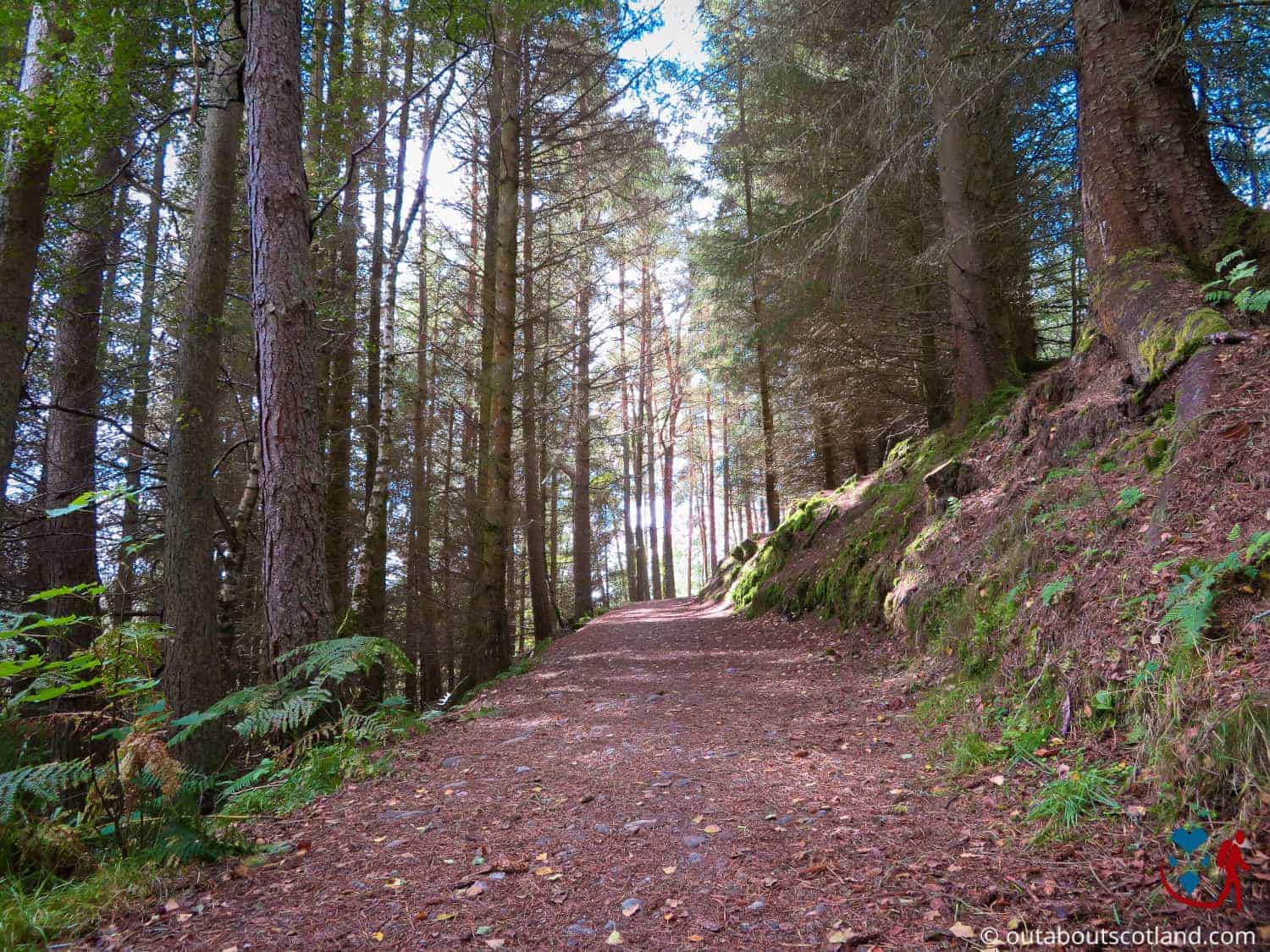
Out About Scotland Complete Guide to the Hermitage Forest
Perthshire is best known as ‘big tree country’ as this corner of Scotland is home to the few remaining ancient forests that once covered the Lowlands. Even though most of the trees were cut down in Victorian times, a major replanting initiative means there are now more than 200,000 acres of forest in Perthshire.
You’re spoilt for choice when it comes to finding forest walks, but one particular favourite I have to recommend is the Hermitage Forest near Dunkeld.
The National Trust for Scotland, which now oversees this lush oasis that was once a recreation area for the Dukes of Atholl, has built paths and bridges throughout the forest so that everyone can enjoy it, regardless of their level of mobility.
When you arrive at the car park, you’ll find a path that splits in two directions, so follow either as they both take you on the same route.
The Hermitage Forest footpath takes you through thick mixed woodland and up into a wooded hillside that presents fantastic views of the River Braan thundering its way downstream, interspersed with tumbling waterfalls and rapids that are filled with salmon in spawning season. There are even a few surprises in store, including a Victorian viewing platform that looks over the Black Linn waterfall and a path leading to another viewing platform that looks like a giant pine cone.
As with most National Trust for Scotland sites, there’s a fee to use the car park, but you can get unlimited free parking at all NTS sites by becoming a member. Follow the affiliate link to the NTS website for further information on how to join.
Linlithgow Palace
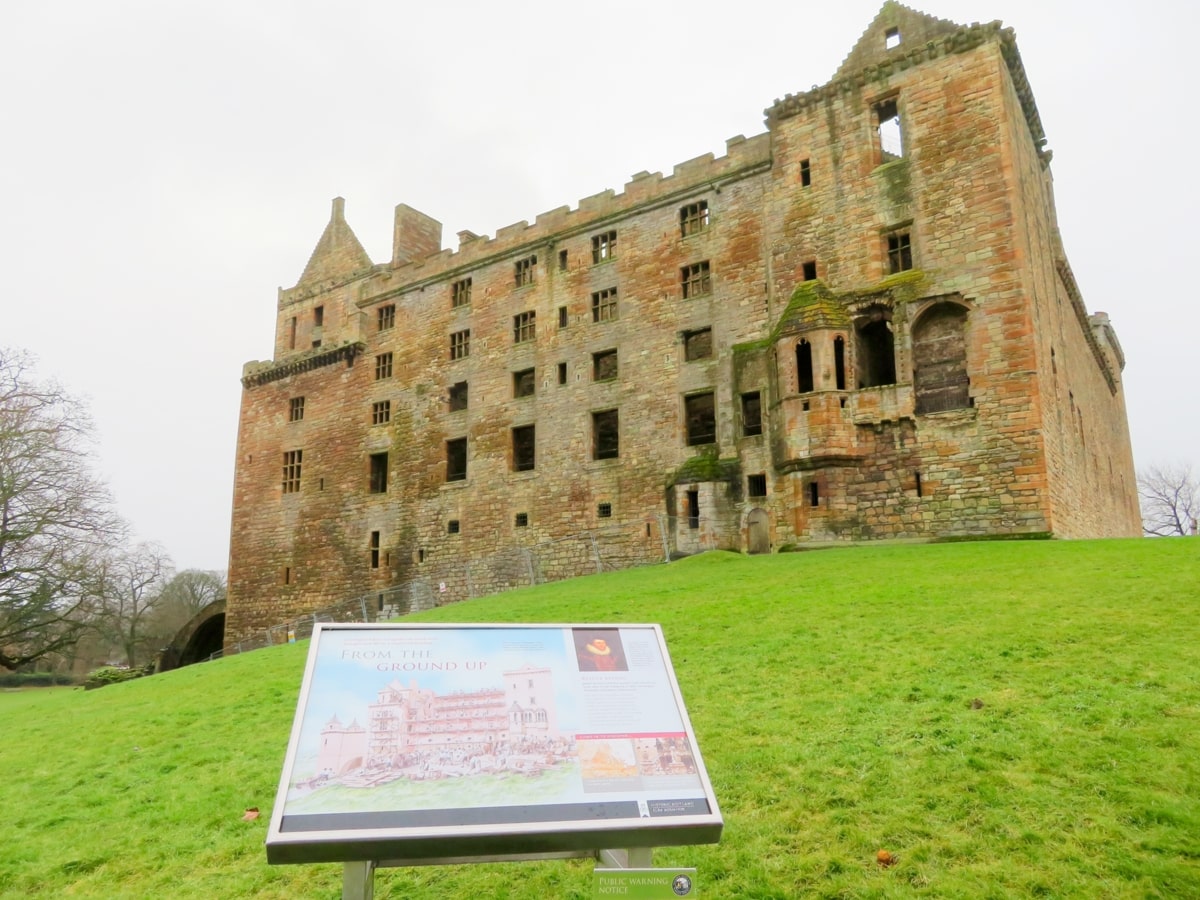
Out About Scotland Complete Guide to Linlithgow Palace
The two most famous Scottish castles are located in the cities of Stirling and Edinburgh, both of which were used as royal palaces. For hundreds of years, royalty frequently travelled between them, but in the days before cars existed, what is now a journey of an hour would have taken several days. It’s for this reason that there’s another royal residence in the middle of the route:Linlithgow Palace.
Historic Environment Scotland, which now manages it as a tourist attraction, partially restored this enormous slab-sided fortress in West Lothian because of its significance in the history of the country. It must have been a beautiful place in its heyday.
Other than its use as a royal stopover, Linlithgow Palace was the birthplace of Mary Queen of Scots, and it has a fascinating history, as you’ll discover while reading the information boards as you make your way around the site.
As a top tip, head to the tower on the far left corner of the palace as you walk in and climb the stairs to the roof, where you’ll get a superb view of the palace courtyard. From there, you can see the park that lies behind the palace as well as the loch, which has a two-mile footpath running around it.
It won’t take you long to explore the palace in its entirety (plan for maybe an hour), but the trail around the loch is worth following if it’s a sunny day, after which you can take the short walk into Linlithgow, where you’ll find lots of traditional shops and cafés on the high street.
Book Tours in Scotland
Loch Leven
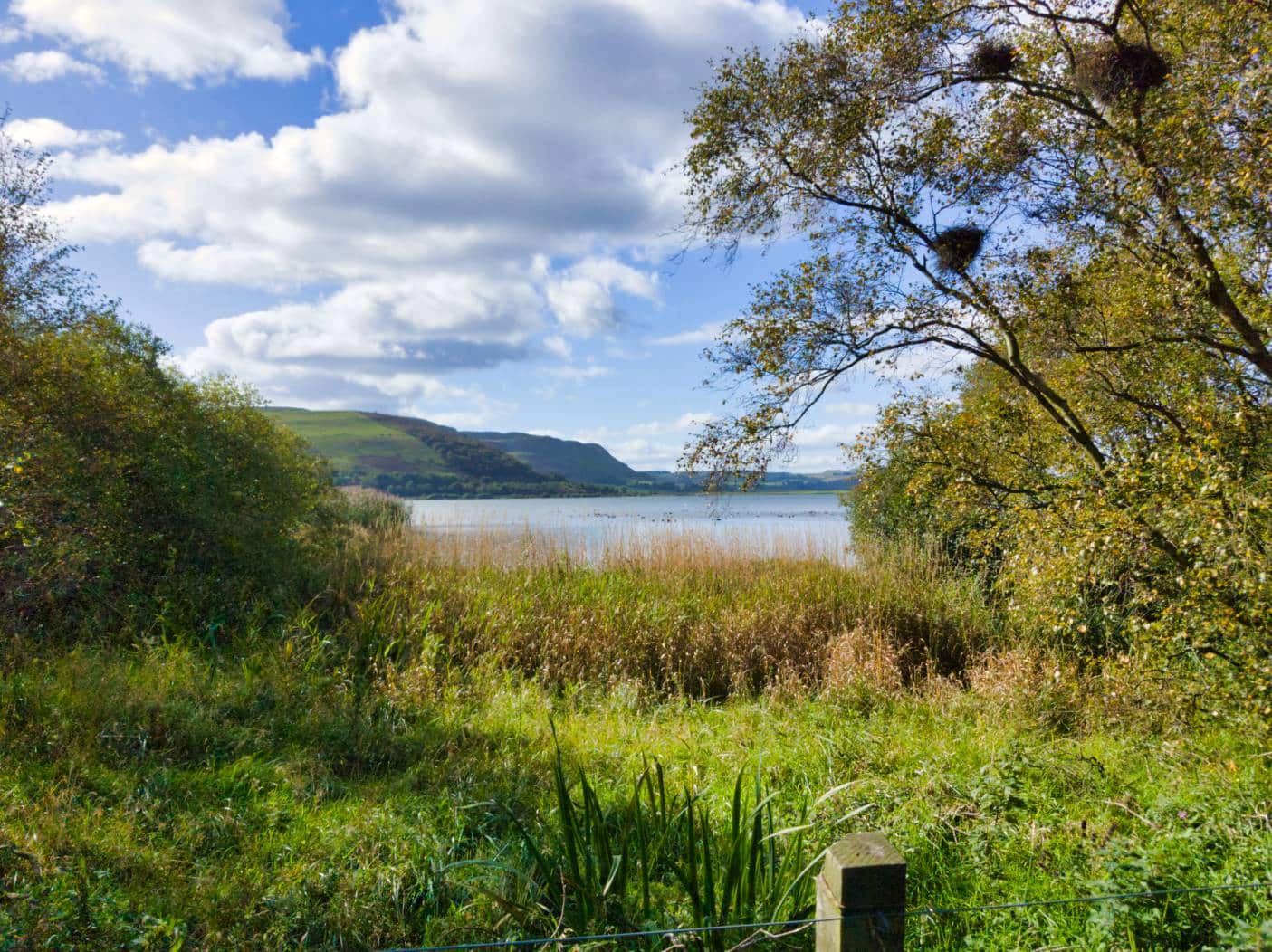
Out About Scotland Complete Guide to Loch Leven
Many of the largest lochs in Scotland are located west of the Highland Boundary Fault, but that doesn’t mean there aren’t any worth visiting in the Lowlands. Loch Leven is one example of a lowland loch that rivals any other in the Highlands, thanks to the superb thirteen-mile nature trail that circles it.
The loch is located between Perth and Dunfermline, close to the Lomond Hills Regional Park. If you’ve ever driven down the M90 on your way to or from Edinburgh, you might have glimpsed it through the trees, but if that’s all you’ve seen, I suggest you take a detour the next time you’re on that stretch of motorway.
There’s a visitor centre at the RSPB Vane Farm building on the B9097 and another at the edge of Kinross, and both have excellent visitor facilities. At the Vane Farm entrance, you can take the underpass to get straight onto the nature trail, and there’s also a café and an RSPB shop.
The entrance at Kinross has a much larger car park, and it’s the departure point for trips out to see Lochleven Castle, but it’s quite a bit busier, so I suggest parking at Vane Farm and then walking or cycling around to the Kinross entrance.
By far the best way to see this expansive body of water and its flocks of resident wildfowl is by cycling as the nature trail passes through woodland, reed beds, and fields, with rivers and wide stretches of grassland thrown in for good measure.
The trail is well managed, with wide, flat paths that are lightly gravelled in places, so it’s ideal for trundling along with the kids in tow or perhaps pushing a buggy or a wheelchair. Accessibility is one of the key features of Loch Leven, and I have to say it’s one of the best easy-to-access attractions in Scotland.
If you enjoy watching birds, you’ll find a number of hides where you can watch them without disturbing them, which is a great way to introduce children to Scotland’s wildlife. If it’s your first time visiting, I recommend heading to RSPB Vane Farm, as they’ll be able to tell you all about the different bird species that live on the loch, and you’ll even be able to rent a pair of binoculars for the day.
McManus Museum
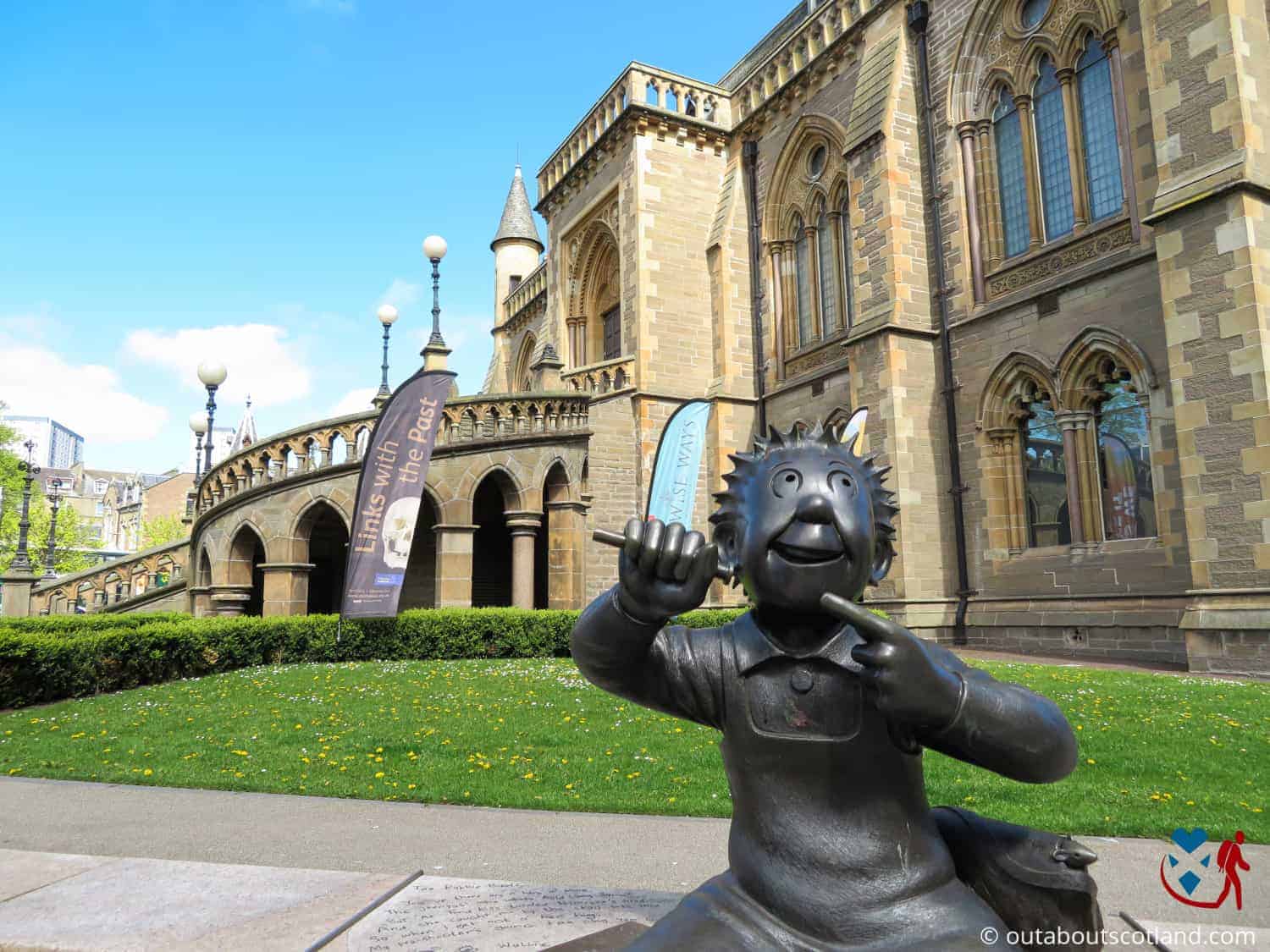
Out About Scotland Complete Guide to the McManus Museum
Dundee is a bit of an underrated town, which is a shame, as there are several great attractions that make it worth visiting. The two biggies are the V&A museum (which I cover below) and the McManus Museum, both of which are free to enter.
This museum was a real surprise when I first visited it, not only for the amazing collection of artefacts and displays but also for the building itself, which is very elaborately decorated and looks a bit like a Gothic cathedral. Inside there are collections from the fields of art, natural history, science, technology and industry, as well as a number of exhibits that tell the story of Dundee, its people, and the landscape it’s situated in.
Some of these displays are real eye-openers. Did you know, for instance, that a lot of Dundee’s wealth stems from the whaling industry, when Scotland was at the forefront of hunting whales? Or that Dundee is home to Britain’s longest-running comic,The Beano,which saw its first edition published in 1938?
For me, the highlight of the McManus Museum is the Victoria Gallery, which is similar to Edinburgh’s National Gallery but isn’t quite as stuffy, and I was also impressed by the Creative Learning Suite, where the museum runs education workshops.
If you’re looking for things to do with children, there’s easily an afternoon’s worth of fun (and free) entertainment inside the McManus Museum, and they’ve managed to include a decent café in there as well as an above-average gift shop.
Protect Your Family From Scotland's Biting Midges
- Powerful, reliable protection for up to 8 hours
- Water- and sweat resistant
- Repels midges, mosquitoes, horse flies, sand flies, fleas and ticks
- Safe for use on adults, children over 30 months and pregnant women
- Non-sticky, moisturising with a pleasant fragrance
- Packaging may vary
Stirling Castle
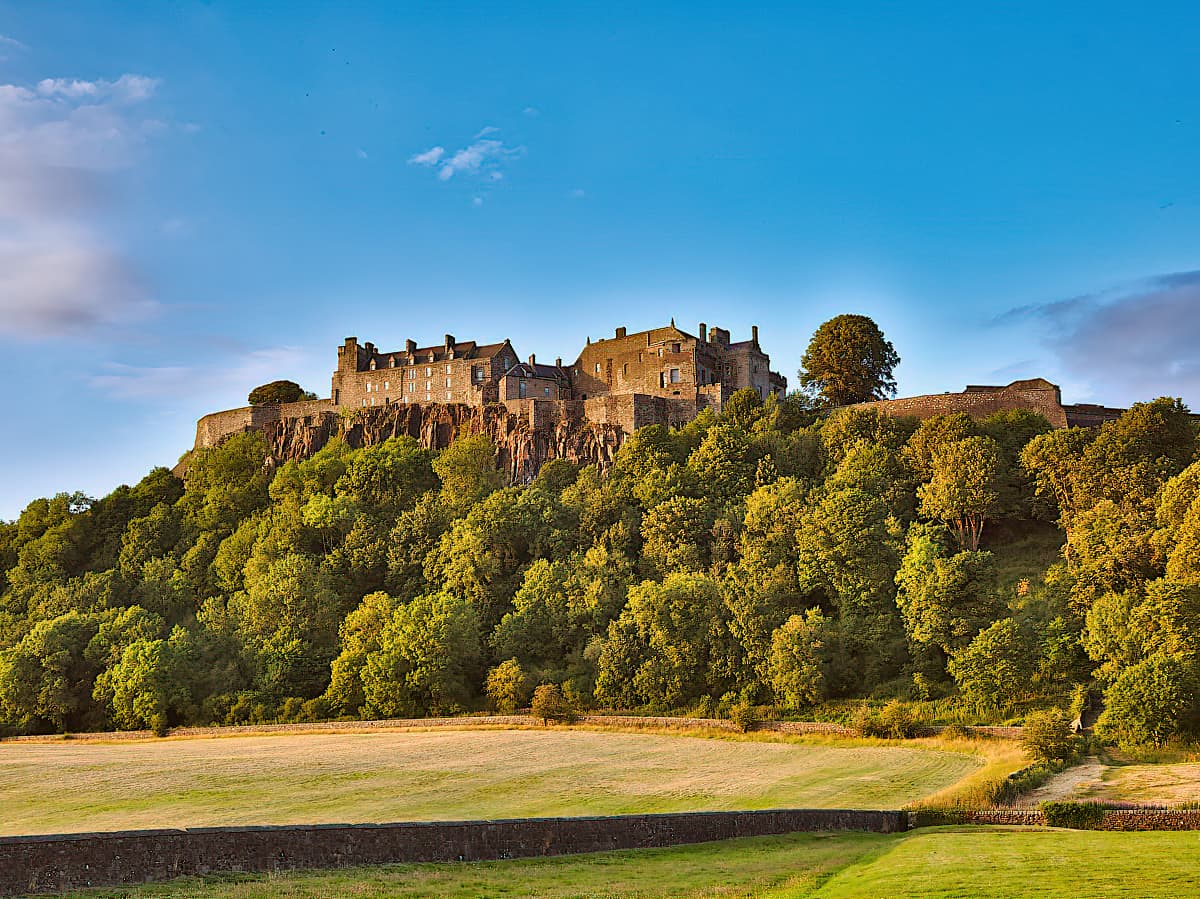
Out About Scotland Complete Guide to Stirling Castle
Stirling Castle sits just under Edinburgh Castle in terms of size, but it more than makes up for it with the incredible views it offers from every balcony, plus it’s nowhere near as busy as Edinburgh Castle—something you’ll only appreciate if you’ve ever been to the capital at the weekend.
This grand fortress sits on top of Castle Hill on the edge of the city, where it looks across the rolling Stirlingshire countryside that sweeps away to the horizon as far as the eye can see. It’s an incredibly atmospheric place, not only for its location but also for its collection of restored buildings that date back to the earliest days of modern Scotland, with some parts dating back as far as the 12th century.
Unlike Edinburgh Castle, at Stirling there’s a large car park so you don’t have to walk far to the entrance, and it’s a wee bit cheaper too, though you could argue you’ll spend less time there compared to Scotland’s #1 tourist attraction.
From the castle esplanade, visitors make their way through the gates, where they can either head to the ramparts to look across the city or wander around the lawns and the exhibitions that depict the castle’s fascinating history. Once inside the main courtyard, there are a couple of museums to look at, as well as the restored royal accommodation, the palace vaults, the Queen Anne gardens, and the Great Hall.
The other highlight of Stirling Castle is the Royal Place, where Mary Queen of Scots spent most of her childhood. Costumed guides take you back in time to retell the conspiracies and gossip that surrounded the royal court, as well as the tales of the many ghosts that supposedly still haunt the palace to this day.
If you have any interest in history and castles and you’re looking for family days out in Scotland, I highly recommend giving Stirling Castle a visit.
V&A Dundee

Out About Scotland Complete Guide to the V&A Dundee
As I mentioned earlier, along with the McManus, Dundee’s V&A Design Museum is one of the city’s top attractions. To look at it from the outside, you might think it’s some kind of high-tech industrial complex with its ultra-futuristic design, but stepping through the doors takes you into the main hall, where the building’s purpose becomes immediately clear.
The V&A is the main gallery in Scotland that’s solely dedicated to the world of design, whether it’s for clothes, kitchen utensils, cars, or anything else that’s man-made. Every facet of design comes to life at the V&A, and it’s as much an education as it is a fun day out, which makes it a great place to take the kids for next to no cost.
The main hall contains a café and a gift shop, while the upstairs area is home to permanent and temporary exhibitions, the first of which is free to enter while the second has a fee to get in.
The permanent exhibition has enough displays to keep visitors occupied for around an hour, and if you’ve got children in tow, you’ll be pleased to know there’s a play area outside where they can entertain themselves with an assortment of design-themed toys.
The temporary exhibitions constantly rotate, so it’s worth checking the V&A Dundee website to see what’s on before leaving home, but if they’re anywhere near as good as the art and design exhibition that was on when I last visited, you’ll find it’s well worth the price of admission
Book Tours in Scotland
Top Family Attractions in Central Scotland
Frequently Asked Questions
Where is Central Scotland?
Central Scotland is the entire belt between the Borders and the Highlands that covers the area between Glasgow and Edinburgh, north to Stirlingshire, and east to Angus.
The main cities in Central Scotland are: Edinburgh, Glasgow, Perth, Dundee, and Stirling. Towns in central Scotland include Falkirk, Dunfermline, Linlithgow, Paisley, and Bo’ness.
Which counties are in Central Scotland?
The counties of Central Scotland are: Clydeside (including the City of Glasgow), the Lothians (including the City of Edinburgh and East, West, and Midlothian), Stirlingshire, Perthshire, Clackmannanshire, and South Angus.
What are the top attractions in Central Scotland?
Top attractions in Central Scotland (in no particular order) are: Aberdour Castle, Stirling Castle, Dunfermline Abbey, Blackness Castle, V&A Dundee, Castle Campbell, Culross, Falkirk Wheel, Inchmahome, Priory, Hermitage Forest, The Kelpies, Bracklinn Falls, Linlithgow Palace, Jupiter Artland, St. Andrews Cathedral, Loch Leven, Ben Lawers, Blair Castle, McManus Museum, Blair Drummond Safari Park, and the National Wallace Monument.
What is the weather like in Central Scotland?
The weather in Central Scotland is much the same between the west and east coasts, although the west coast tends to have stronger winds that are brought in from the Atlantic Ocean.
In summer, expect high temperatures to average 19 °C and low temperatures to average 11 °C, with 40 mm of rainfall and average wind speeds of 8 mph (12.87 km/h). In winter, expect high temperatures to average 7 °C and low temperatures to average 1 °C, with 75 mm of rainfall and average wind speeds of 11 mph (17.7 km/h).
Protect Your Family From Scotland's Biting Midges
- Powerful, reliable protection for up to 8 hours
- Water- and sweat resistant
- Repels midges, mosquitoes, horse flies, sand flies, fleas and ticks
- Safe for use on adults, children over 30 months and pregnant women
- Non-sticky, moisturising with a pleasant fragrance
- Packaging may vary



